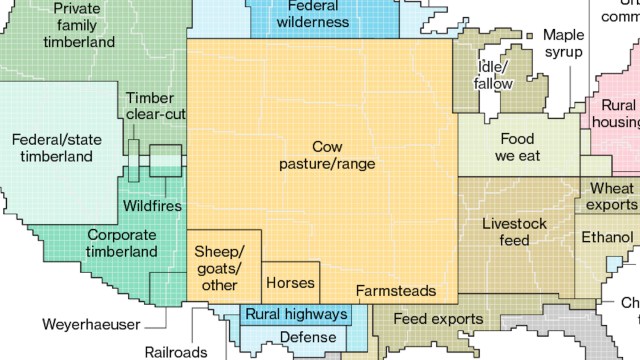Your Viewing Guide To The Best Meteor Shower In Years: 2018’s Perseids

Three great things all align this August, making the Perseids a can’t-miss show. Here’s how to take advantage.
When it comes to meteor showers, we have these dazzling pictures in our minds of seeing streaks of light appear all over the sky: rapidly, brightly, and profusely. Yet in real life, many of us have had experiences that pale in comparison, where we might spend an entire hour outside only to see five (or even fewer) faint meteors. Unless conditions are really right, meteor showers can be a tremendous disappointment.
But during the peak of this year’s Perseids, from August 11–13, you’ll have a chance to see the best meteor shower in years. They should be rapid, bright, and relatively frequent. And most importantly, the skies should cooperate. Here’s the science of how it works, and what you should do to make the most of it.

Every time a comet or asteroid orbits close to the Sun, the combination of heat and tidal forces puts strains and stresses on that rocky, icy body. Volatile compounds boil or sublimate, fractures and fissures form on the main body, and tiny particles are kicked off of it. Dust and ions give rise to the famous two tails of a comet, which form a spectacular sight in their own right. But there’s a third phenomenon that arises alongside these more spectacular, but short-lasting, displays: tiny fragments break off of the orbiting comet or asteroid. Over time, they, like the comet or asteroid they were spawned from, will orbit the Sun along that same elliptical path.

By time many orbits have occurred, the entire ellipse will be filled with particle debris from these many close passes near the Sun. Not every comet or asteroid that takes the plunge into the inner Solar System will create a meteor shower, though. The key is that the path of the debris stream needs to cross Earth’s orbit! As these particles move in their elliptical path, Earth can pass through that path, meaning that both the Earth and these particles will collide.
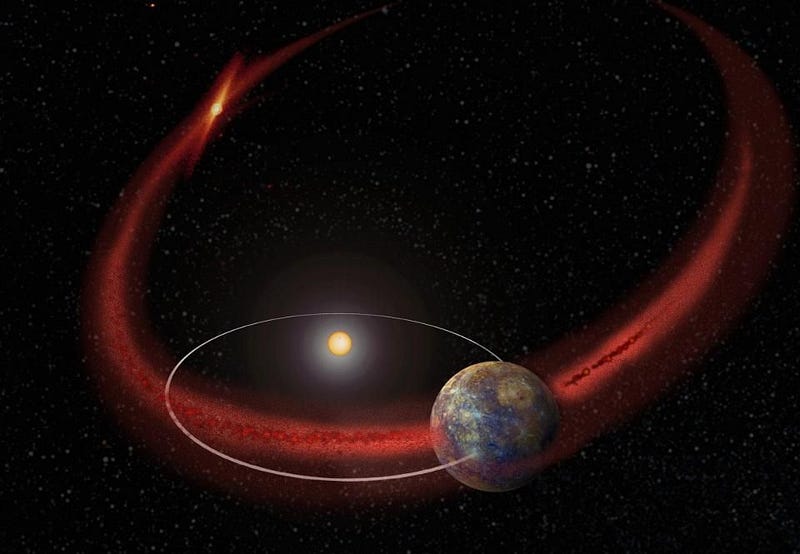
And the farther away the object that created these meteor showers reaches, the faster the meteors will be moving when they strike Earth’s atmosphere. Faster meteors means more kinetic energy, and more kinetic energy means brighter sights for the human eye to see when meteor showers actually occur. When it comes to the regular meteor shower displays we have here on Earth, the most consistent show is the Perseid meteor shower, for a myriad of good reasons.

The Perseids originate from Comet Swift-Tuttle, which itself is the single most dangerous object known to humanity. The nucleus of the comet is 26 kilometers across, and it takes 133 years to make a complete ellipse in its orbit. It contains nearly 30 times the kinetic energy of the asteroid strike that wiped out the dinosaurs, and based on an upcoming interaction with Jupiter, has about a 1-in-a-million chance of colliding with Earth in the year 4479.
But this comet has been orbiting for thousands of years, making the Perseids the most reliable meteor shower year-after-year. This year, 2018, there are four factors that will come together to make it the greatest astronomical show on Earth.

There are a number of factors that determine how good a show is put on by a meteor shower. Here are the four most important:
- How will Earth pass to the center of the comet’s debris stream? For the Perseids, the answer is spectacular: always close to the center.
- What is the relative speed of the stream to Earth? Faster speeds mean more energy, and hence brighter, more visible meteors; the Perseid debris stream strikes Earth at around a whopping 50 km/s.
- What are the light pollution conditions? More light pollution means fewer meteors, with the Moon being the brightest natural source. This year has a new Moon on August 11th, ideal for minimal light pollution.
- Finally, what is the density of the debris stream at this point in the comet’s orbit? While other meteor showers, like the Leonids, have peaks close to the comet’s nucleus, the Perseids are always consistent.

Consistency is good! The Perseids, at their peak, deliver anywhere from 1-to-5 meteors per minute. Since the comet made a close pass in 1992, the number of meteors is steadily decreasing, but the ideal viewing conditions means this could be the best shower we get until December of 2020, when the slower-but-more-numerous Geminids will coincide with a new Moon. The most spectacular event we can look forward to should come around November of 2034, when the Leonid meteor shower is scheduled to deliver a meteor storm, but that’s a long way off!
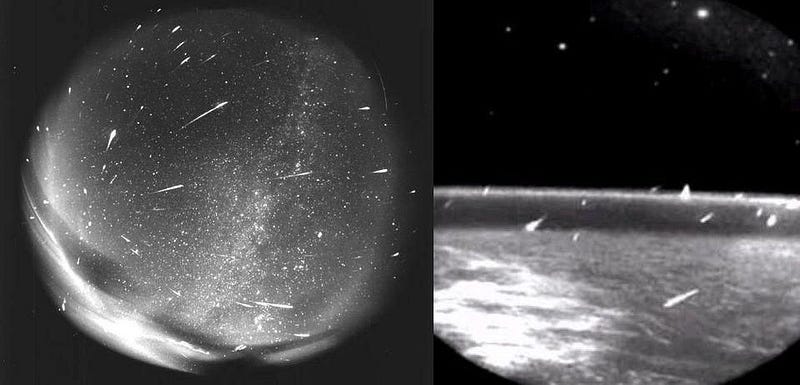
So how do you make the most of it? The beautiful thing about a meteor shower is that it’s best experienced without any astronomical equipment like an observatory, telescope, or even binoculars. All you need is clear, dark skies, your eyes (and any glasses/contacts you need), and comfortable viewing conditions. Because this meteor shower occurs at night, in August, you’ll want to consider bringing some of the following:
- A chair, or even better, a lounge chair, to comfortably allow you to view the sky.
- A blanket, because even during the summer, the temperature can drop, and you’ll want to stay warm.
- Insect repellant, because no one like it when you’re getting bitten by bugs.
- And a red headlamp/flashlight, because white light will ruin your night vision.
And you need your night vision at its best.
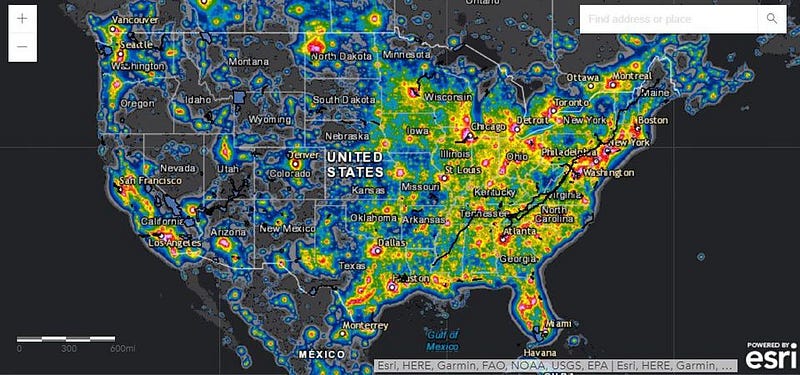
This is a map of light pollution in the United States. If you want to see the best show, you’ll need to get to the darkest skies possible. (Here is the worldwide, interactive version.) The less light pollution you have, the more meteors you’ll be able to see, and the easier it will be to see them. With the Moon gone, your viewing experience is solely dependent on human-caused light pollution, and whether your skies are clear. (Which we cannot yet control.)
It takes the human eyes about 30 minutes to optimally adjust to the darkness of a pristine night sky, but just a few seconds of white light can ruin that. But if you need to see something, up to about 30 seconds of red light won’t harm your night vision at all. A flashlight or headlamp that has a dedicated red LED light is a must-have accessory.

Other than that, the last thing you need to know is when and where to look. You can’t enjoy a meteor shower if you don’t know when to expect the meteors! Although stars in the sky appear quickly after sunset, you don’t achieve true dark conditions until the Sun dips about 18 degrees below the horizon. This is latitude-dependent, but typically takes about 2-to-3 hours for the sky to get fully dark. Friday night (August 11th-12th) and Saturday night (August 12th-13th) will give the best shows.
But where should you look? Because the debris stream moves in a specific direction and so does Earth, all the meteors associated with the Perseid meteor shower will appear to originate from a specific location in the sky: just below and to the left of the first “V” in the “W” made by the constellation Cassiopeia!

This region of space is just outside of Cassiopeia and in the constellation of Perseus, and that’s why this meteor shower is named the Perseids! Ideally, you’ll position your chair so that you’re viewing a huge region of the sky centered on this point, since all the meteors will appear to move away from it. We call this point the radiant, since all the meteors appear to radiate from this single point-of-origin.
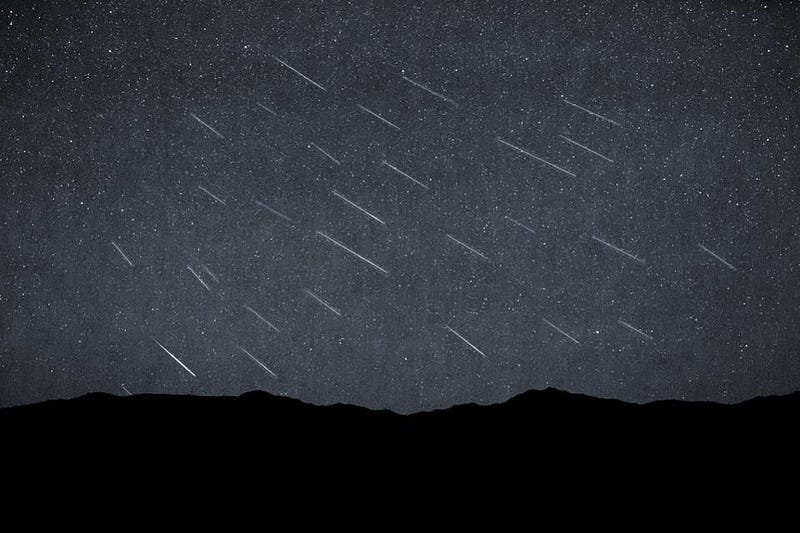
And that’s it! This year, the Perseids have the added bonus of having their peak nights fall on a Friday and Saturday, meaning more people will have the opportunity to look up and see the glory of this natural wonder for themselves. Find yourself a good location, bring along some good company and some good food and drinks, and spend some time appreciating the Universe and our place in it. The saying “the best things in life are free” doesn’t always feel true. But the second weekend in August, from the 11th through the 13th, you just might get to experience it for yourself.
Ethan Siegel is the author of Beyond the Galaxy and Treknology. You can pre-order his third book, currently in development: the Encyclopaedia Cosmologica.





